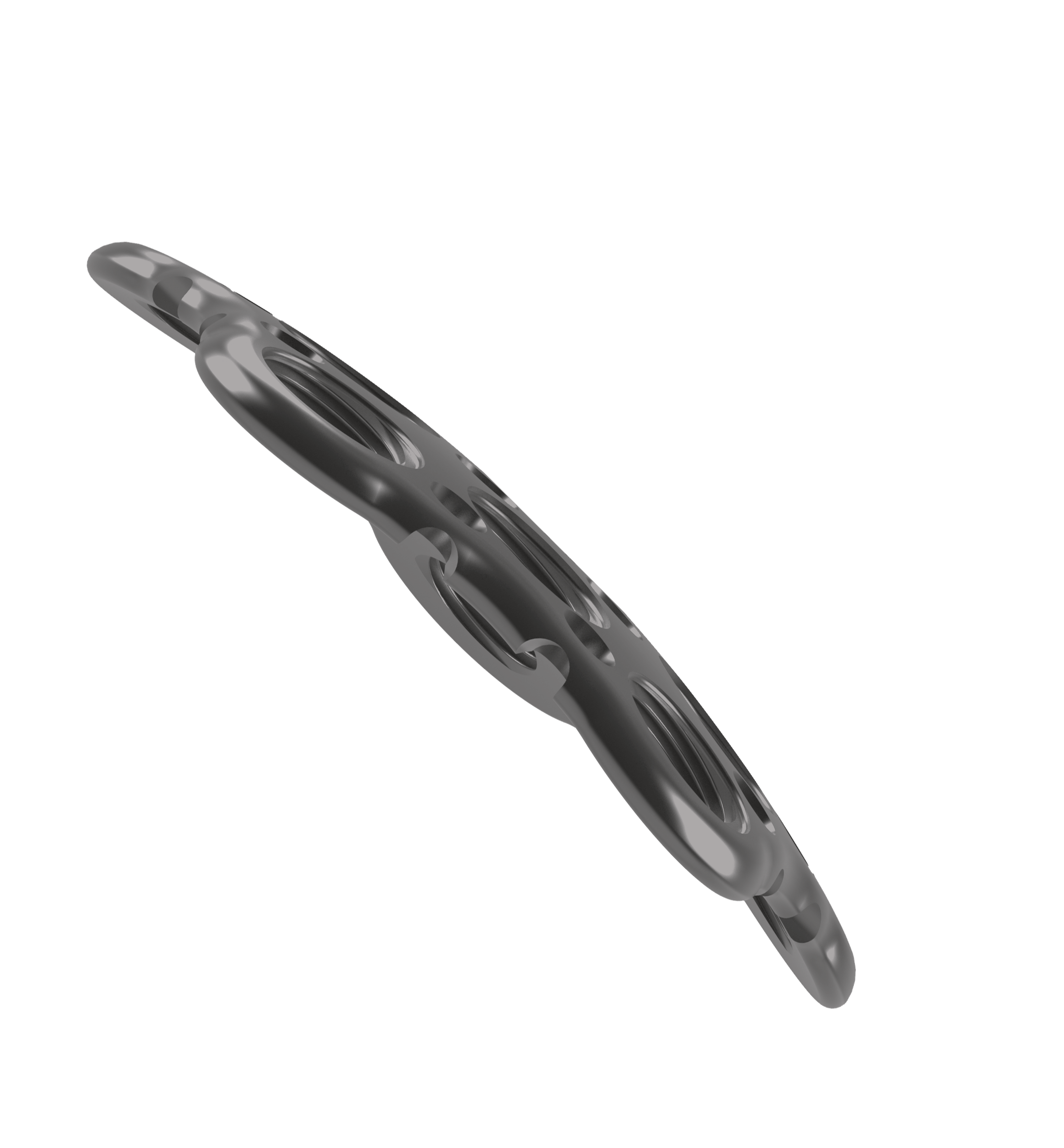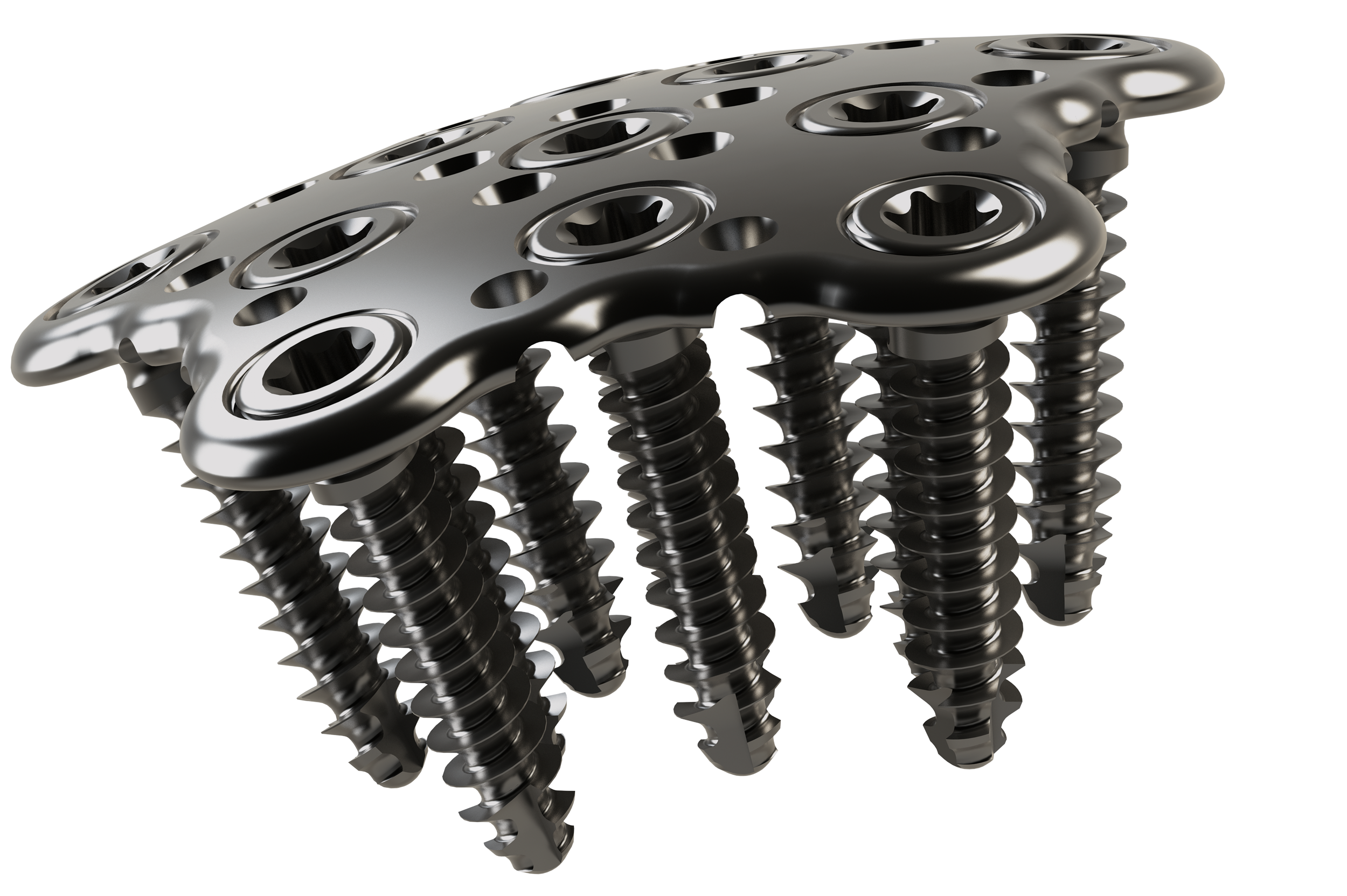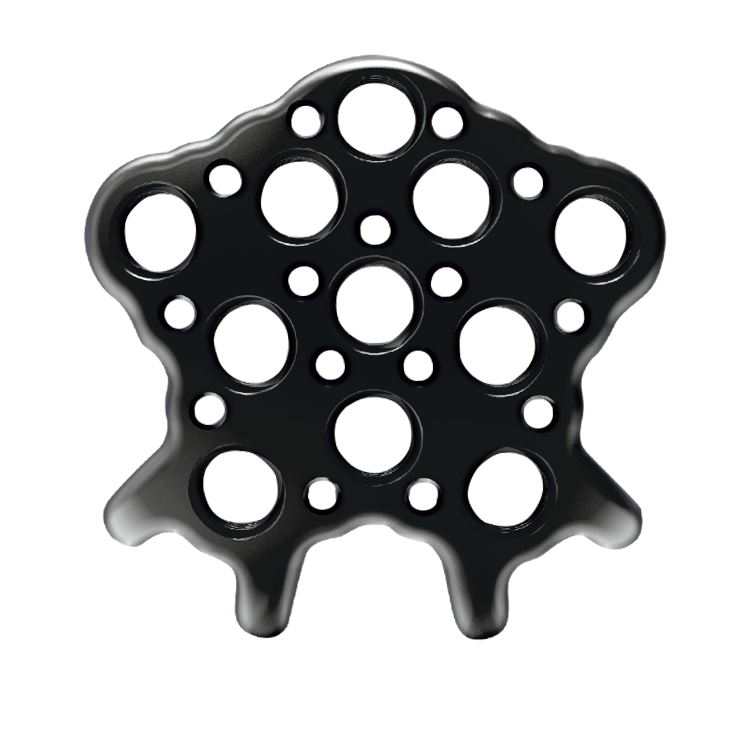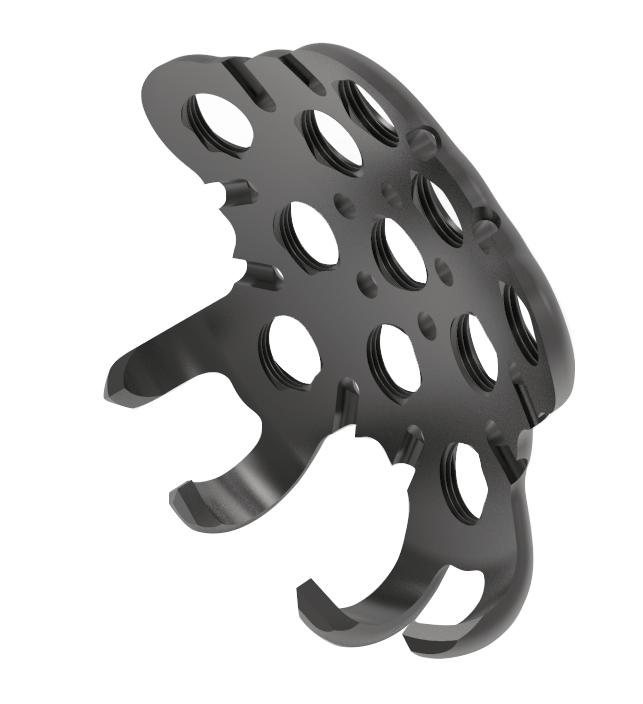3.5mm Patella-Plating-System
Standard- and Basket-Plates for the treatment of simple fractures, multi fragment fractures and comminuted fractures of the patella.
Surgical Technique Guide Clinical Case 2 Clinical Case 1 Surgical VideoThere are several different techniques available for the surgical treatment of patellar fractures. In recent times, anterior angular-stable plate fixation has become increasingly important – especially in the case of multi-fragmented patellar fractures. Biomechanical studies, such as the study in Injury 2020 by Wagner F. et al.*, show the superiority of this technique over other osteosynthesis procedures.
On conventional radiographs, patellar fractures are often underestimated. After preoperative CT diagnosis, fractures with radiologically “simple” fractures often also include a distal pole involvement. In some cases, the lower pole is multi-fragmented. Within the postoperative mobilization phase, a secondary dislocation can potentially be caused by the pulling-force of the patellar tendon on the distal fragments.
* Biomechanical comparison of a 3.5 mm anterior locking plate to cannulated screws with anterior tension band wiring in comminuted patellar fractures, Wagner F. et al., Injury, 2020

Dedicated Kirschner wire holes in the plate allow for temporary Kirschner wire fixation to facilitate the positioning of the plate on the bone.





The lateral hooks of the plate are adjusted in order to not affect the retropatellar cartilage.


The T15 screw drive ensures optimal force transmission, reduces the risk of deformation of the screw drive and allows for self-retention of the screw on the screwdriver.
